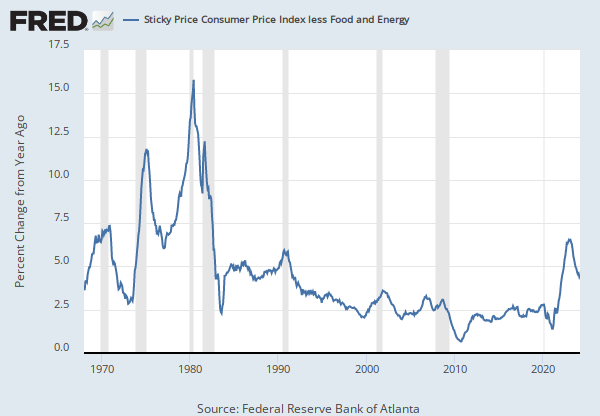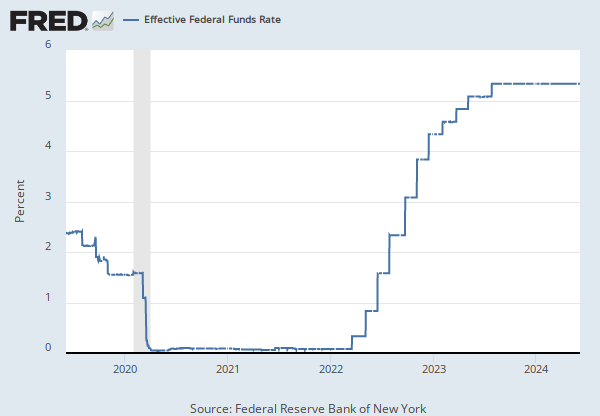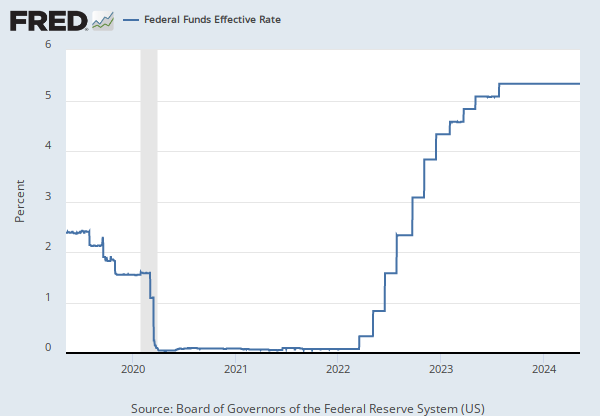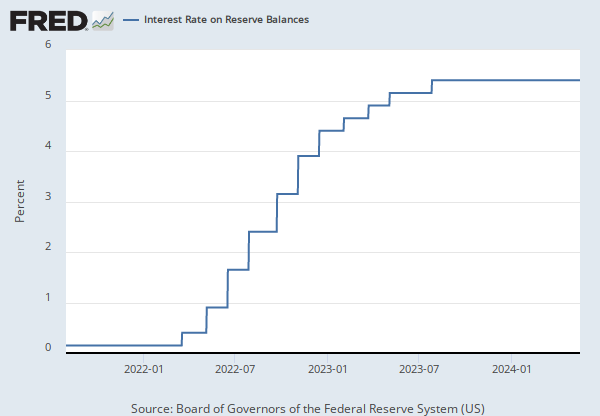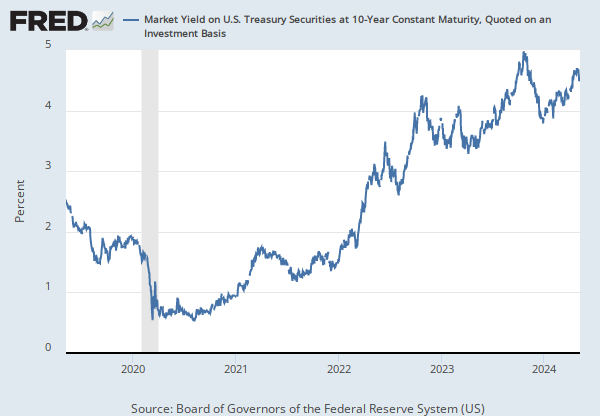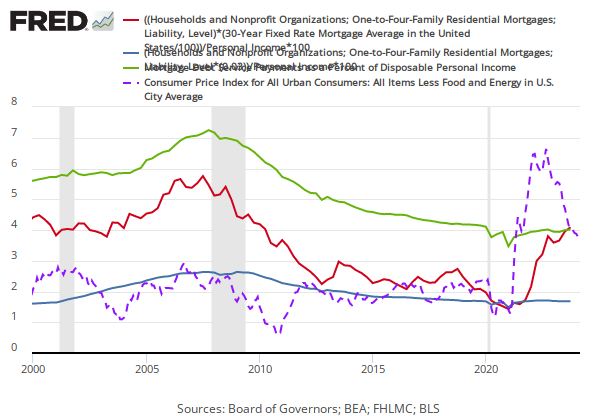Federal Reserve Economic Data
Data in this graph are copyrighted. Please review the copyright information in the series notes before sharing.
Notes
Source: Board of Governors of the Federal Reserve System (US)
Release: FOMC Press Release
Units: Percent, Not Seasonally Adjusted
Frequency: Daily, 7-Day
Notes:
This series represents upper limit of the federal funds target range established by the Federal Open Market Committee. The data updated each day is the data effective as of that day.
Suggested Citation:
Board of Governors of the Federal Reserve System (US), Federal Funds Target Range - Upper Limit [DFEDTARU], retrieved from FRED, Federal Reserve Bank of St. Louis; https://fred.stlouisfed.org/series/DFEDTARU, .
Source: Board of Governors of the Federal Reserve System (US)
Release: FOMC Press Release
Units: Percent, Not Seasonally Adjusted
Frequency: Daily, 7-Day
Notes:
Data for the period prior to 1994 come from the working paper "A New Federal Funds Rate Target Series: September 27, 1982 - December 31, 1993" (Thornton, Federal Reserve Bank of St. Louis, 2005, http://research.stlouisfed.org/wp/2005/2005-032.pdf). Due to an error in the paper values from April 2, 1986 - April 20, 1986 were adjusted manually to 7.3125%. Data from 1994 to the present are derived from FOMC meeting transcripts and FOMC meeting statements, http://www.federalreserve.gov/fomc/.
Effective December 16, 2008, target rate is reported as a range. Current data at https://fred.stlouisfed.org/series/DFEDTARU and https://fred.stlouisfed.org/series/DFEDTARL
Suggested Citation:
Board of Governors of the Federal Reserve System (US), Federal Funds Target Rate (DISCONTINUED) [DFEDTAR], retrieved from FRED, Federal Reserve Bank of St. Louis; https://fred.stlouisfed.org/series/DFEDTAR, .
Source: U.S. Bureau of Labor Statistics
Release: Consumer Price Index
Units: Index 1982-1984=100, Seasonally Adjusted
Frequency: Monthly
Notes:
The "Consumer Price Index for All Urban Consumers: All Items Less Food & Energy" is an aggregate of prices paid by urban consumers for a typical basket of goods, excluding food and energy. This measurement, known as "Core CPI," is widely used by economists because food and energy have very volatile prices. The Bureau of Labor Statistics defines and measures the official CPI, and more information can be found in the FAQ or in this article.
Suggested Citation:
U.S. Bureau of Labor Statistics, Consumer Price Index for All Urban Consumers: All Items Less Food and Energy in U.S. City Average [CPILFESL], retrieved from FRED, Federal Reserve Bank of St. Louis; https://fred.stlouisfed.org/series/CPILFESL, .
Release Tables
Related Data and Content
Data Suggestions Based On Your Search
Content Suggestions
Other Formats
Related Categories
Releases
Tags
Permalink/Embed
modal open, choose link customization options
Select automatic updates to the data or a static time frame. All data are subject to revision.

